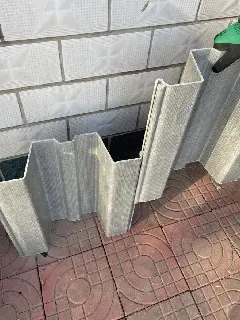loading...
- No. 9, Xingyuan South Street, Dongwaihuan Road, Zaoqiang County, Hengshui, Hebei, China
- admin@zjcomposites.com
- +86 15097380338
- Welcome to visit our website!
fibre reinforced plastic tanks
The Advantages of Fibre Reinforced Plastic Tanks
Fibre reinforced plastic (FRP) tanks have emerged as a highly efficient solution for various storage needs across industries. Combining the outstanding attributes of plastic with the structural strength derived from reinforcement fibres, these tanks present a compelling choice for many applications, ranging from water storage and chemical containment to wastewater treatment systems. Understanding the benefits of FRP tanks can help industries make informed decisions about their storage solutions.
One of the primary advantages of FRP tanks is their excellent durability. Traditional materials like steel or concrete can be prone to corrosion, rust, and other forms of degradation over time. In contrast, FRP is inherently resistant to a wide array of chemicals and environmental conditions. This means that FRP tanks can maintain structural integrity and function effectively, even when exposed to hostile substances such as acids, alkalis, and other aggressive chemicals. Consequently, their longevity significantly reduces the frequency and cost of repairs and replacements, making them a cost-effective choice in the long run.
Another notable benefit of fibre reinforced plastic tanks is their lightweight nature. Compared to traditional materials, FRP is considerably lighter, which simplifies the logistics of installation and transportation. This is particularly beneficial in remote or challenging locations where heavy lifting equipment may not be readily accessible. The ease of handling saves time and reduces labor costs during installation. Additionally, the lighter weight can lead to reduced foundation requirements, further contributing to lower overall project expenses.
Energy efficiency is also an important factor when it comes to FRP tanks. These tanks are often designed with insulation properties that help maintain the temperature of stored liquids, reducing energy costs associated with heating or cooling. For example, in applications where temperature regulation is critical, such as in food processing or pharmaceuticals, the insulating benefits of FRP can lead to significant energy savings over time.
fibre reinforced plastic tanks

Moreover, fibre reinforced plastic tanks offer design flexibility. They can be manufactured in various shapes and sizes, allowing manufacturers to tailor solutions to specific needs. Customizable configurations can be an essential factor for industries that require specialized storage solutions. Additionally, the aesthetic versatility of FRP allows for different finishes and colors, enabling installations that can blend seamlessly with existing structures or meet branding requirements.
In terms of environmental impact, FRP tanks also hold an edge. Their longevity and resistance to corrosion reduce the likelihood of leaks and failures that could pose environmental hazards. Furthermore, the production of FRP materials often involves fewer resources and generates less waste compared to traditional tanks, aligning with sustainability goals pursued by many organizations today.
Finally, the installation and maintenance of fibre reinforced plastic tanks generally require less labor and cost than traditional materials. With minimal upkeep needs, FRP tanks present an attractive option for businesses looking to optimize their operational efficiency while ensuring safety and compliance with storage regulations.
In conclusion, fibre reinforced plastic tanks represent a technological advancement that combines durability, efficiency, and environmental responsibility. Their various benefits make them an ideal choice for industries requiring safe and reliable storage solutions. As organizations continue to prioritize both performance and sustainability, FRP tanks are poised to play a critical role in modern storage applications.
-
The Rise of FRP Profiles: Strong, Lightweight, and Built to LastNewsJul.14,2025
-
SMC Panel Tanks: A Modern Water Storage Solution for All EnvironmentsNewsJul.14,2025
-
GRP Grating: A Modern Solution for Safe and Durable Access SystemsNewsJul.14,2025
-
Galvanized Steel Water Tanks: Durable, Reliable, and Ready for UseNewsJul.14,2025
-
FRP Mini Mesh Grating: The Safer, Smarter Flooring SolutionNewsJul.14,2025
-
Exploring FRP Vessels: Durable Solutions for Modern Fluid HandlingNewsJul.14,2025
-
GRP Structures: The Future of Lightweight, High-Performance EngineeringNewsJun.20,2025
